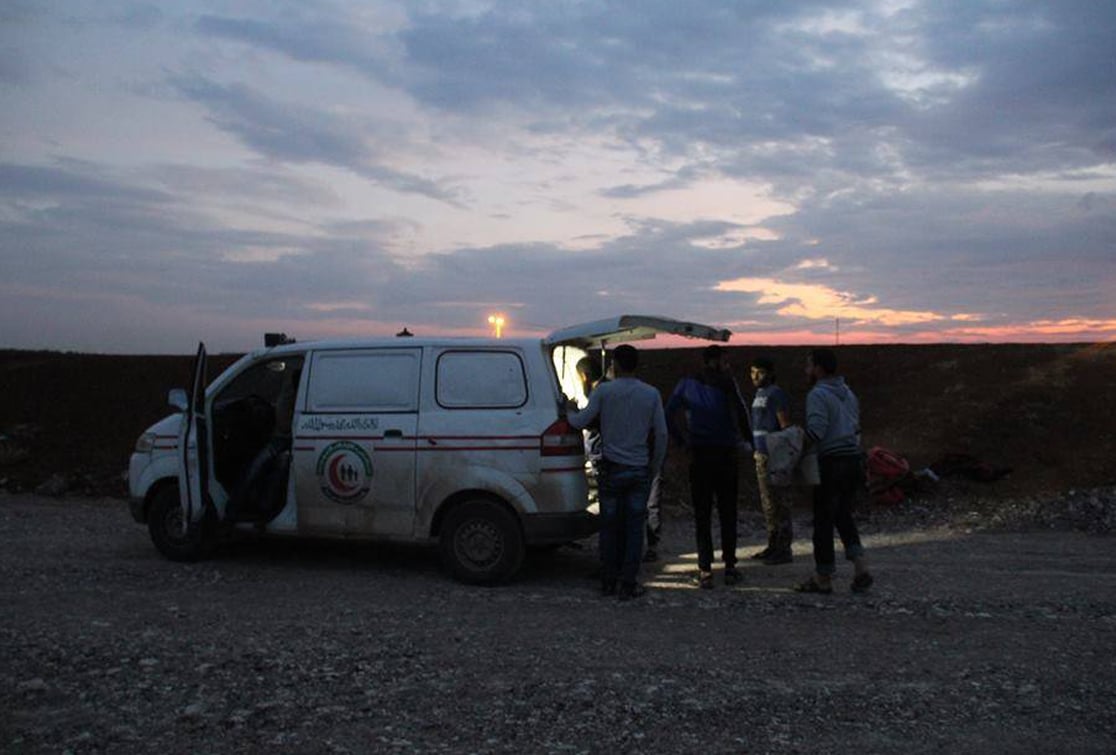Seven Died and 12 others Awaiting the same Fate

SNHR has published a report in which it called on the Jordanian regime to allow access to the wounded Syrians who are trapped on Tal Shehab crossing in western Daraa governorate.
The report notes that in the summer of 2011, Jordan opened its borders fully to receive the flow of Syrian refugees which lasted approximately until the second half of 2012 when the Jordanian government started gradually impeding the flow of refugees and shutting down crossing points. Also, refugees couldn’t enter Jordan through airports unless under specific condition. Subsequently, all crossings were shut down almost completely. However, Jordan authorities continued to receive wounded and injured for treatment until June 2016.
The report says that between 2011 and 2016, the Jordan government’s strategies led to a significant drop in refugees’ flow according to the United Nations High Commission for Refugees. Despite the drop, number of refugees in Jordan neared one million. Additionally, there are 12,000 Syrian refugees trapped at the Jordanian-Syrian borders.
The report sheds light on the closure of Tal Shehab crossing at the end of June 2016 after ISIS blew a car bomb on the Jordan-Syrian borders in Al Rakban area where seven Jordanian soldiers were killed, after which Jordan shut down Tal Shehab crossing completely and denied access to any wounded to the Jordanian lands.
The report records that seven wounded have died due to the lack of medical care since the end of June. Furthermore, there are 12 wounded in critical conditions who will die unless they receive immediate medical attention.
The report draws upon media activists and relief workers who told the Network about the glaring negligence and the detonating medical state in the southern region in general, and also about a dire shortage in special equipment and medical personnel especially in the field of microvascular surgery.
Also, the report notes that even if the wounded were to illegally enter Jordan, it is impossible to admit them to hospitals due to the lack of an entry permit by the Jordanian authorities.
The report calls on the Jordanian authorities to allow access to all the refugees trapped at the borders whose houses and stores were destroyed. These people have risked their lives to arrive and stay in a desert dry area especially women and children, and to transfer them to Al Azraq refugee camp.
Moreover, the report stresses that It is not right for the Jordan government to sit idly by watching the wounded die on the borders. Furthermore, Jordan should allow access to the other wounded. Additionally, the report emphasizes that the 12 wounded must be taken care of in order to save their lives, and that all other wounded must be granted access.
Finally, the report says that Jordan has to, at least, allow access to the people waiting at the borders because, and despite the disastrous conditions, it is their only choice after hundreds of refugees who were trapped returned to their destroyed homes or to other dangerous areas.


